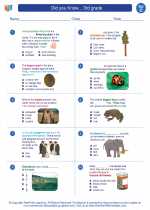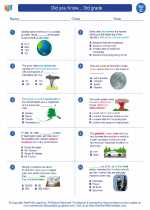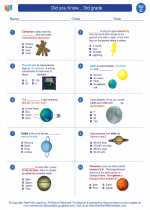Thermometer Study Guide
Welcome to the study guide on thermometers! Let's delve into the fascinating world of temperature measurement.
What is a Thermometer?
A thermometer is a device used to measure temperature. It consists of a long, narrow, uniform glass tube with a bulb at one end which contains a liquid such as mercury or alcohol. As the temperature changes, the liquid expands or contracts, and the level of the liquid in the tube changes, allowing us to measure the temperature.
Types of Thermometers
There are several types of thermometers, including:
- Mercury Thermometers: These use mercury as the liquid and are commonly used in households and medical settings.
- Digital Thermometers: These display the temperature readings digitally and are widely used due to their accuracy and ease of use.
- Infrared Thermometers: These measure temperature by detecting the infrared energy emitted by an object, and are often used for non-contact temperature measurement.
- Bimetallic Strip Thermometers: These use the expansion and contraction of two different metals to measure temperature, and are often used in thermostats.
How to Use a Thermometer
When using a thermometer, it's important to follow these steps:
- Shake the thermometer if it contains a liquid such as mercury to ensure the level is below the maximum reading.
- Place the thermometer in the area or substance whose temperature you want to measure.
- Wait for the temperature reading to stabilize, then read and record the temperature.
- Clean and store the thermometer properly after use to ensure accuracy and longevity.
Applications of Thermometers
Thermometers are used in various fields and settings, including:
- Medical: for measuring body temperature
- Weather: for recording outdoor temperatures
- Food industry: for ensuring food safety by measuring cooking and storage temperatures
- Industrial processes: for monitoring and controlling temperatures in various processes
Now that you have a solid understanding of thermometers, you're ready to tackle any questions or problems related to this topic!
.◂Science Worksheets and Study Guides Third Grade. Did you Know... 3rd grade
Study Guide Did you Know... 3rd grade
Did you Know... 3rd grade  Worksheet/Answer key
Worksheet/Answer key Did you Know... 3rd grade
Did you Know... 3rd grade  Worksheet/Answer key
Worksheet/Answer key Did you Know... 3rd grade
Did you Know... 3rd grade  Worksheet/Answer key
Worksheet/Answer key Did you Know... 3rd grade
Did you Know... 3rd grade 

 Worksheet/Answer key
Worksheet/Answer key
 Worksheet/Answer key
Worksheet/Answer key
 Worksheet/Answer key
Worksheet/Answer key

The resources above cover the following skills:
LIFE SCIENCE
Unity and Diversity
Construct an argument from evidence to explain the likelihood of an organism’s ability to survive when compared to the resources in a certain habitat (e.g., freshwater organisms survive well, less well, or not at all in saltwater; desert organisms survive well, less well, or not at all in woodlands).
Create models that illustrate how organisms and their habitats make up a system in which the parts depend on each other.